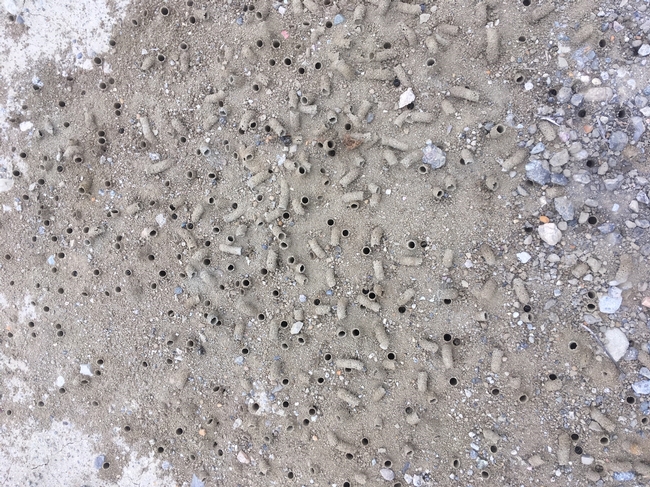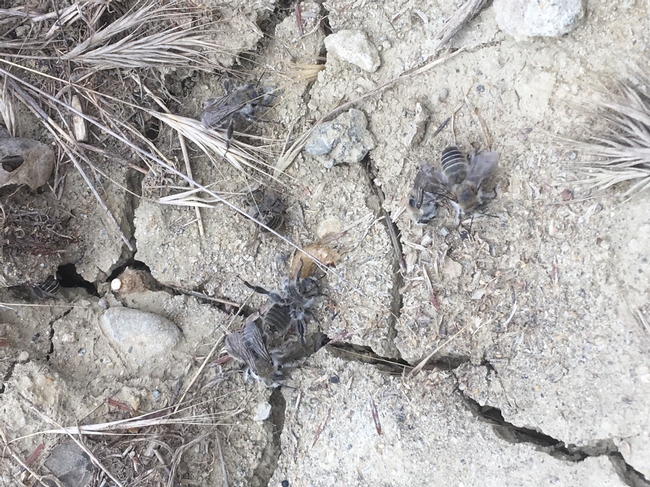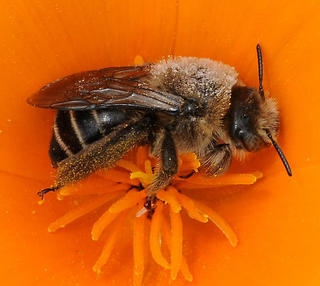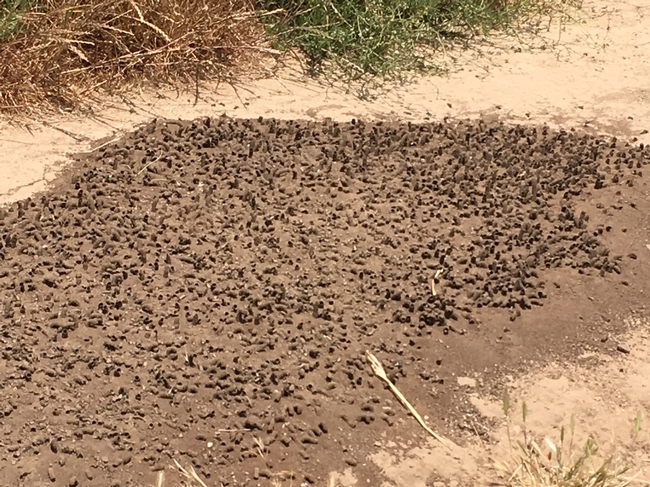What a lot of bees. These are Miner or Chimney bee nests. Another type of Digger bee, these nests are from Santa Paula Canyon thanks to Nathan Lurie
The hills are alive with the sound of BEE-EEZZE. And often they are found crawling on the ground, as is the case of Digger Bees. At this time of year, they might be seen along the margins of avocado orchards, near hiking trails or in undisturbed areas of citrus orchards. They are called Digger Bees commonly, but this is just a generic name for a large group of bees that nest in the ground. There are many genera and species and because of the general lack of study of these bees they are lumped under the name Digger for lack of any greater knowledge and naming of them.
There are several kinds of small hairy or metallic bees that dig into the soil to nest, hence the common name, digger bees. They are a diverse group that comes from different families and the term digger bee can include the andrenid bees, halictid bees, and colletid bees such as the plasterer and yellow-faced bees. These are solitary bees and native pollinators that are active early in the season. Each female digs a cylindrical underground tunnel as a nest where she reproduces (as opposed to social bees such as honey bees where only the queen reproduces and maintains a colony with the help of sterile workers). Although solitary, they form colonies that may have several hundred nests in one spot, but all nests are independently owned.
The subterranean nest is provisioned with a mixture of nectar and pollen collected from nearby flowering plants. This "bee-bread" is food for the bee's offspring (larvae) that develop in the underground chamber and emerge as adults the following year.
Digger bees are 1/4 to 1/2-inch-long and variable in color (mostly shiny metallic or dark, but some with markings of white, yellow or reddish brown). There is one generation of digger bees per summer and once the adults finish perpetuating the species by laying eggs of the next generation there will be no activity till the following spring.
Digger bee nests are commonly located in areas where grass and mulch are scarse, either from too much shade, previous drought conditions or other stress. Most of them like to fly around their airspace at different times of the day, something to do with mating, air temperature or staking territory. They often travel great distances to forage.
The threat of being stung by digger bees is unlikely. The bees are docile and not likely to sting unless handled or threatened. There is no nest guarding behavior or attack behavior like there is with social insects such as honey bees and yellowjacket wasps.
Another recent colony find was comprised of another digger bee.
In the case of this bee find, they are possibly Diadasia bituberculata – as suggested by Robin Thorpe, UCD entomologist. They are uncommon in the rest of the world, but found here in California and the western US. There are over 1,000 digger bee species.
Diadasia Digger Bee "Colony", Thanks to Pest Control Adviser Jane Delahoyde's friend.



